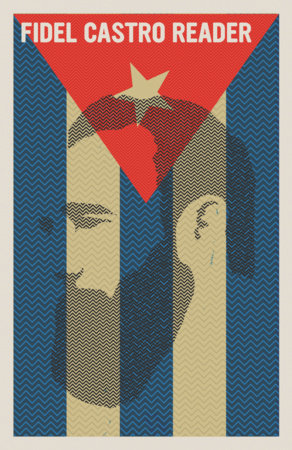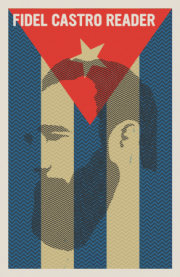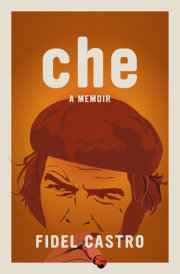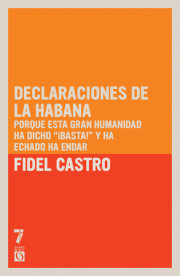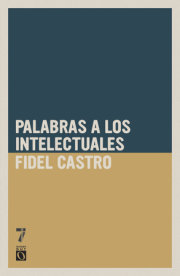Fidel Castro Biographical Note
Chronology
Foreword: Tributes to Fidel by President Raúl Castro
1. History Will Absolve Me
Santiago de Cuba, October 16, 1953
2. On the Triumph of the Revolution
Céspedes Park, Santiago de Cuba, January 2, 1959
Camp Columbia, Havana, January 8, 1959
3. At the United Nations General Assembly
New York, September 26, 1960
4. The Bay of Pigs Invasion and the Proclamation of the
Socialist Character of the Revolution
Colón Cemetery, Havana, April 16, 1961
May Day, Havana, May 1, 1961
5. Words to Intellectuals
Havana, June 30, 1961
6. Manifesto for the Liberation of the Americas:
“The Second Declaration of Havana”
Havana, February 4, 1962
7. The October Missile Crisis
The Five Points of Dignity, October 28, 1962
On the Missile Crisis, November 1, 1962
8. Formation of the Cuban Communist Party and Che’s Farewell Letter
Chaplin Theater, Havana, October 3, 1965
9. On the Latin American Revolution
Havana, August 10, 1967
10. The Death of Che Guevara
Revolution Plaza, Havana, October 18, 1967
11. One Hundred Years of Struggle for Cuban Independence
La Demajagua Monument, Manzanillo, October 10, 1968
12. Revolution and Counterrevolution in Allende’s Chile
National Stadium, Santiago de Chile, December 2, 1971
13. On behalf of the Movement of Nonaligned Countries
UN General Assembly, New York, October 12, 1979
14. Rectifying the Errors of the Cuban Revolution
Karl Marx Theater, Havana, April 19, 1986
15. Cuban Internationalism and the Collapse of the Socialist Bloc
Havana, December 7, 1989
16. Return of Che Guevara’s Remains to Cuba
Santa Clara, Cuba, October 17, 1997
17. Inauguration of President Chávez in Venezuela: “The Battle of Ideas”
University of Venezuela, Caracas, February 3, 1999
18. Response to the US Declaration of the “War Against Terrorism”
Havana, September 22, 2001
19. Assessing Half a Century of the Cuban Revolution
Revolution Plaza, Havana, May 1, 2003
20. In Answer to the Empire: Letters to President George W. Bush
Proclamation by an Adversary of the US Government, May 14, 2004
Second Epistle, June 21, 2004
Epilogue: Fidel Castro on the Cuban Revolution After Fidel
Index
Further reading

